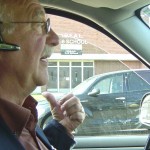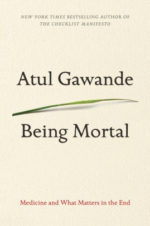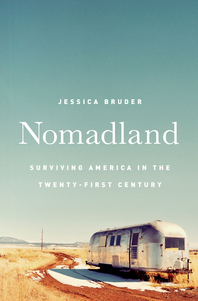Can Teachers Run Their Own Schools?
Posted on | April 19, 2010 | Comments Off on Can Teachers Run Their Own Schools?
As a part of the “learning differently” study, I have visited several schools run as teacher cooperatives: no principal, flat organization.
Cooperatives, of course, are a great American tradition. We think of the limited liability corporation as one of the great social inventions of the last two hundred years, but cooperatives have been a part of the fabric of our society in ways that are just as important. Agricultural cooperatives made the production and marketing of citrus in Southern California possible and commercially viable while preserving family ownership of the means of production for more than fifty years. Think Sunkist. Cooperatives brought hundreds of farmers together throughout the upper Midwest. Think Green Giant. The spirit of cooperation made American civic life possible. Think Tocqueville. But can cooperatives work for schools?
The answer is complex. If one were to ask whether teacher cooperatives are about to replace school district hierarchies, the answer would be “of course not.” But if one were to ask, whether it is possible for groups of teachers to run successful schools on their own and in the process increase the degrees of autonomy and flexibility in their own jobs, then one get a different answer. “Yes, it’s possible, and it more possible if public policy helps.” And if one were to ask whether there are lessons to be learned from these cooperatives about how we should redesign teaching as work and schools as workplaces, then the lessons become deep and filled with possibility.
Last winter I visited the Avalon school in St. Paul, and I spent last Thursday in Milwaukee, where retired labor organizer John Parr showed me around a few of the 13 teacher-run schools there. Spring had sprung, and the trees were advancing from bud to leaf at a pace that was noticeable almost hour by hour. It’s hard to beat the first day of full-on spring in the Midwest.
Milwaukee has an unusual variation of teacher-run schools. The schools organize under charter law, but the teachers remain employees of the district and members of the teacher bargaining unit. John’s essential question is, “why should a teacher have to sacrifice their income to start a great school.”
About a decade ago, his daughter Cris, a Milwaukee Public School teacher, asked whether there would be some way for teachers in Milwaukee to emulate the EdVisions schools they had seen in Minnesota. John devised memoranda of understanding with the school district and with the Milwaukee Teachers Education Association that made the district-employee teacher-run schools possible. Cris Parr is now teacher in charge of SUPAR, the School for Urban Planning and Development.
There are too many twists and turns in this story to relay here, but the short conclusion is that these schools stand as existence proofs that teacher run schools are possible. They take in some of the most neglected students in the city, and provide them a safe haven. At SUPAR, the average incoming 9th grader reads at a fourth grade level.
But it is also apparent that these schools exist in an a hostile and unsure political environment, the dimensions of which I am just beginning to understand, and about which I will write later because I want to jump over the temporal political problems and consider the possibilities for the redesign of teaching work.
Bureaucratic theory, elevated to a civil religion by a lot of managers and politicians, holds that there must be a single point of accountability and thus a single point of authority in all organizations. “The buck stops here,” as Harry Truman used to say. But experts at work need latitude, or as my colleague Peter Drucker used to say, “knowledge workers can’t really be managed.” Between the polls of these ideas one finds the classic problem in organization: getting enough coherence so that things don’t fly apart, and getting enough flexibility that organizational gears don’t grind to a halt.
Teacher led schools try to create coherence by means different than managerial authority or organizational routines, and are therefore good case examples. But they tend not to fly apart because they have their own internal logic, and therefore are good case examples.
How do they do this?
First, teacher led schools substitute unitary democracy for central authority. They are real co-ops. Successful ones develop the capacity to make decisions without developing “process paralysis.”
The idea of unitary democracy, as opposed to interest group democracy or political parties, is that the goals of the cooperative enterprise are more important than individual positions. These schools are not the refuge of iconoclasts. For a school like SUPAR or Avalon to work, the adults who work in it need to create working decisional norms that make decisions expeditiously. At Avalon, faculty use a “fist of five” voting system indicating how supportive of a proposal they are. A closed fist blocks action, but the person who does this is required to articulate an acceptable alternative. In practice, there are not a lot of closed fists.
The cooperative enterprise involves and teaches students, too. At SUPAR, the newsprint sheets with ideas about how to solve school problems hang in a classroom where students can see them as demonstrations of how adults solve issues. At Avalon, students wrote the school’s constitution.
In organizational behavior terms, the cooperatives substitute norms of reciprocity, civility, and engagement for the norms of obedience and rule following that prevail in public bureaucracies.
Second, teacher led schools develop introspective routines that cause both students and adults to inquire deeply into whether and how learning is taking place. They are brilliant when they succeed and delusional when they don’t.
Projects, which are the substantive pedagogy at many of these schools, are developed using rubrics. To the extent that the adults and the students understand and internalize these rubrics, they become internal indicators of achievement and progress. To the extent that they are honored with a wink and nod, they fail to inform, and over time they erode the capacity for organizational learning.
I believe there are lessons in these cooperatives for the reform of district schools. The most obvious is that students are capable of much more self-control than most schools expect of them. While there are many reasons that urban high schools appear just on the ragged edge of anarchy, organizing the school around external control rather than internal control of students is counterproductive. It directs resources to control that would better be spent on learning and teaching. And it fails to teach the important 21st Century skills of collaboration, and solving hard-to-define problems.
The second lesson from these schools is that faculty and staff are much more capable of designing their own work and of understanding changing circumstances than the central command and control would suggest. But to move from a compliance model of schooling to a cooperative work place requires a great deal of effort on the part of the adults making the move.
A cooperative enterprise is not simply a place where individual teachers do as they wish, and teach as they wish. In fact, historically there was more room for individuals to hide out in conventional bureaucracies. Shielded by the classroom door, the lack of supervision, and the union contract, teachers often gain substantial operating independence so long as they did not disobey direct orders or challenge superiors. In a cooperative, the obligation for joint action, for understanding how the parts of a curriculum fit together and how “my” job fits with yours become imperative.
These skills are not easily learned, and put a premium on picking a good team at the beginning and sustaining it over time. The best teacher-run schools I saw had a manageable level of staff turnover.
More about each of these two qualities in later scribbling, including some thoughts about how they apply to the newly developing Pilot Schools in Los Angeles.





